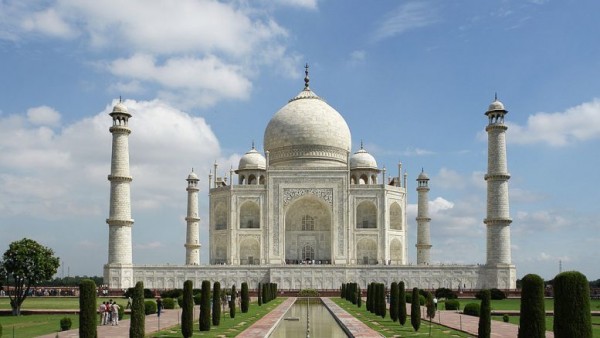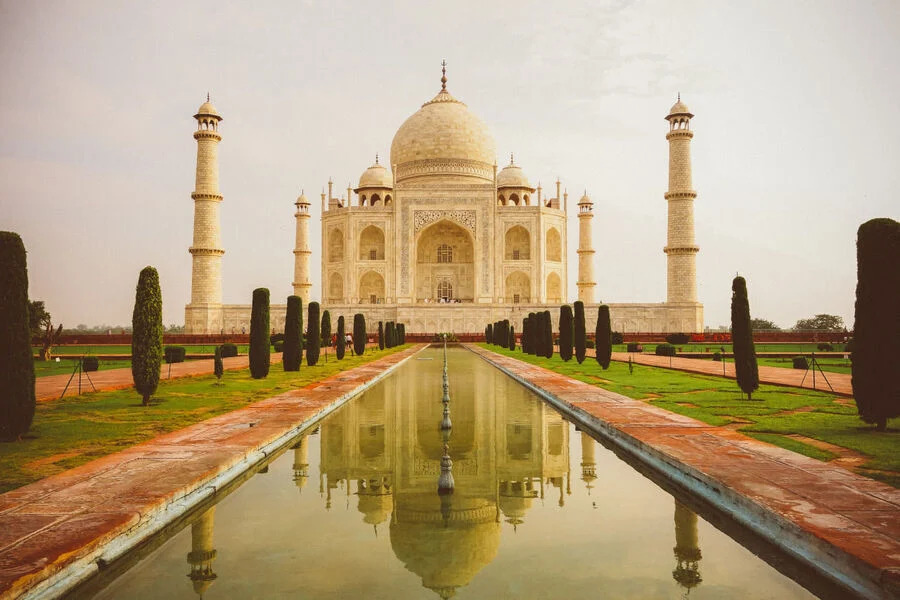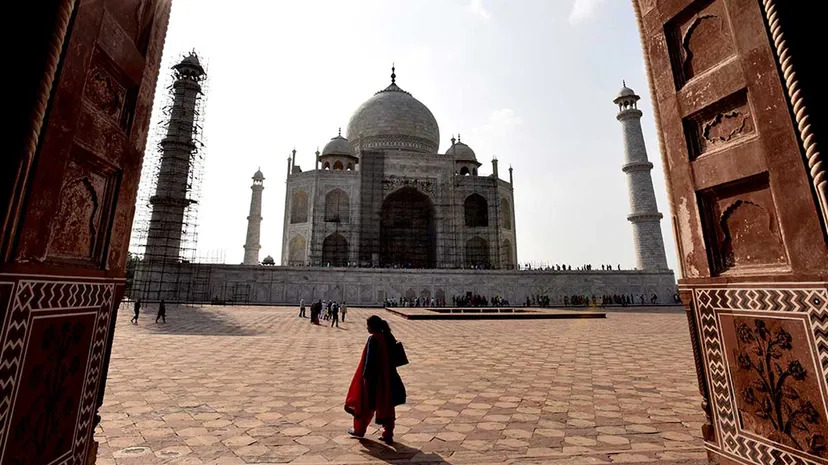


One of the grandest architectural accomplishments of this magnificent dynasty can be found in Agra, which served as the seat of the Mughal empire for far more than a century. As a result, it makes up the third point of the Golden Triangle, a well-known tourist route that includes some of India's most renowned architectural landmarks.
Most of Agra's historical landmarks overlook across the Yamuna River, which runs beside the city's banks. The Taj Mahal is located atop a hillside above the river and is by far the most well-known of Agra's treasures. The iconic Agra Fort and a number of other magnificent tombs and monuments are located farther down the river's shores.
Agra is currently a bustling commercial and economic hub in addition to being a well-liked tourist attraction. It is also rich in heritage and culture. The enormous, packed city, with its numerous forts, tombs, and cemeteries, as well as its active chowks or street markets, offers a vivid Indian sensation.
Although it is widely acknowledged that Agra has a long history dating back to the Mahabharata, Sultan Sikandar Lod, the Muslim monarch of the Delhi Sultanate, built the city in 1504. The province was given to the Sultan's son, Sultan Ibrahim Lodi, after his demise. He controlled his Kingdom from Agra up to the First Battle of Panipat, fought in 1526, when he was defeated by Mughal Badshah (emperor) Babar.
The Mughals marked the start of the city's heyday. Under the Badshahs (emperors), Akbar, Jahangir, and Shh Jahn, it continued to be referred to as Akbarabd and served as the seat of the Mughal Empire.

1. Airway: The Indira Gandhi International Airport in Delhi, which has excellent connections to all important Indian and foreign cities, is the nearest national and international airport to Agra. From here, tourists either take a bus, reserve a taxi, or rent a cab to get to Agra.
2. Roadway: State-run and commercial buses connect Agra with a number of cities and towns, including Delhi, Gwalior, Kanpur, Lucknow, and Jaipur. There are essentially only two important bus terminals in Agra, Idgah Bus Stand and ISBT, from which buses may be taken to all significant locations. The NH 2 highway connects Delhi and Agra, whereas the NH 11 route connects Jaipur and Agra.
3. Railway: Since Agra is situated in the center of the Delhi-Mumbai and Delhi-Chennai main train lines, it is very simple to travel here by train from anyplace. Local trains link cities like Delhi, Jaipur, Gwalior, Kolkata, Mumbai, and Chennai with Agra. After disembarking at the train station, travelers can rent a pre-paid taxi, ride in an auto-rickshaw, or use a cycle rickshaw to go where they're going.
Summer (May – September): Min 25°C/77°F Max 45 C/113’F
Winter (October – April): Min 5°C/41°F Max 25°C/77°F
The greatest season to explore Agra seems to be between autumn and winter, when the weather is nice and ideal for traveling and the heat has subsided. Spend a day strolling about the Taj complex and taking in the grandeur of this majestic structure.
1-2 days are ideal. It takes just one full day to see all of Agra's top attractions, including the Taj Mahal and Agra Fort. From Delhi or Jaipur, most visitors come in the early afternoon. On the morning of arrival, they will therefore visit Mehtab Bagh to take in the breathtaking magnificent views of the Taj Mahal.

During the Mughal Empire, this huge edifice was largely constructed for military uses. The building, which was first a brick fort, was renovated under King Akbar and finished in 1573. Some parts of the fort have marble surrounds that give them a palace-like aspect, and the marble workmanship on the fort has elements of the Taj Mahal.
Although there is frequently a line to enter, the fort is much more peaceful indoors than most tourists anticipate. It takes three to four hours to tour the entire fort.
The Tomb of Itimad-ud-Daulah, affectionately known as the "jewel box in marble" and more often known as the Baby Taj, is an easily overlooked edifice, yet the exquisite marble craftsmanship is not to be missed. Visitors can still see a multitude of Persian writings on the square building's four minarets, which once held hand-painted ceilings.
The hand-cut marble floor, which was finished in 1628, is still in good condition presently. Despite being smaller than its well-known neighbor, the Taj Mahal, the Tomb of Itimad-ud-Daulah is still distinctive for its delicate architecture.
The Mughal Empire's capital from 1571 to 1585 was located in Fatehpur Sikri, which is located forty kilometers from Agra. The stories from that bygone era are now depicted on its red granite walls. Visitors can discover Buland Darwaza, a 54-meter gateway constructed by Akbar following his victory over Gujarat in 1601, within this ancient complex. Behind Buland Darwaza are the Sufi saint Salim Chishti's tomb and the Jama Masjid.
The distance from Agra to Sikandara, where Akbar's Tomb is located, is only 20 kilometers. The enormous south gate, which is situated in a 119-acre field and has four marble-topped balconies, doubles as the primary entry most of the time. The main tomb is encircled by a Charbagh garden that closely resembles a quad architecture, a classic element in early Islamic gardening.
Fortunately, many of Agra's top hotels are located just two kilometers from one of the Taj Mahal's three gates. There are various hotels of different price levels along Taj East Gate Road, including Agra's and one of India's best: The Oberoi Amarvilas, which leads straight to one ticket office. The best selection of accommodation, restaurants, and stores are located along the main inner-city road, Fatehabad Road, but the traffic is terrible. The Old City, a spectacular but chaotic region with a magnificent mosque and lively bazaar, is next to the second major site, Agra Fort.
· Radisson Hotel Agra · Hotel Taj Resorts · Hotel ITC Mughal · Hotel Holiday Inn Agra MG Road · Taj Hotel & Convention Centre Agra · Holiday Inn